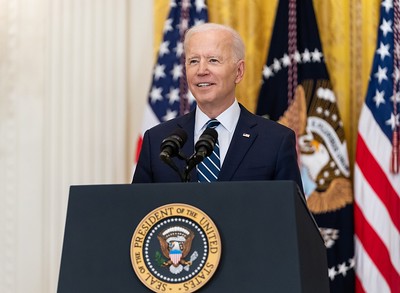On Friday, President Joe Biden admitted that his Administration’s free community college program may not make it into the final Build Back Better proposal. In September, Democrats offered a means test to save the free community college program. A means test would likely lower the overall cost of the plan.
In addition to free community college tuition, the Build Back Better plan increases the maximum Pell Grant by almost $1,500. It also provides additional funding to Historically Black Colleges and Universities, tribal colleges and universities, and minority-serving institutions. It’s not clear whether Congress will cut that funding. Currently, Democrats do not have enough support in the Senate to pass the bill.
Free community college opponents argue that students can already afford community college tuition. But affordability depends on your economic perspective. The mean household income for married parents and children in Washtenaw County is $150,000. In those circumstances, applicants may see community college tuition as highly affordable. For someone who lives in one of the 14% of Washtenaw County’s impoverished households, they simply cannot afford community college tuition.
Free community college options have been available for a long time
By design, community college programs benefit people who can least afford them. But even without a free community college tuition program, community colleges can provide 100% tuition aid.
Pell Grants have been available since the early 1970’s. This means-tested federal financial aid program can fund an entire degree for qualified applicants. Additionally, the Michigan Department of Treasury administers several need-based scholarship and grant programs. The State also offers tuition assistance for children who have been in Michigan’s foster care system, or who have been enrolled in Medicaid for at least 24 months during high school. Individuals who are enrolled members of a federally recognized Michigan Native American Tribe may also qualify for free tuition at any Michigan higher educational institution under the terms of the Comstock Agreement. Finally, institutions also offer their own scholarships and need-based aid.
In short, community colleges can provide aid packages for prospective students who cannot afford to attend. Despite these options, most community colleges don’t publicize these financial aid options. And most prospective students don’t know that these options exist. So naturally, a free community college program funded by the federal or state government sounds pretty good. And when would-be students hear that the federal free community college tuition program died, they will not apply to attend, even though several financial aid options that could reduce their tuition bill to $0 still exist.
The federal government provided a lot of cash that Washtenaw Community College must distribute directly to students. It makes much more sense to promote scholarship and grant funding than one’s hypothetical employability following graduation.
Photo Credit: Prachatai , via Flickr

































